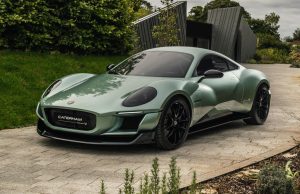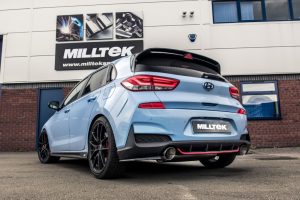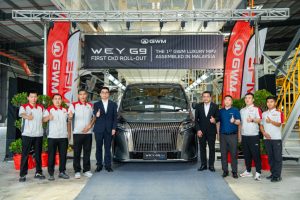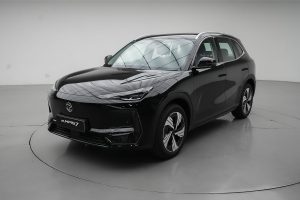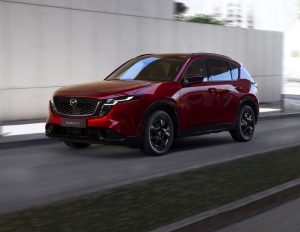Man! It’s good to be going somewhere much further than the Klang Valley for a change. That opportunity came in the form of a media drive.
Toyota was primed to start selling a hybrid and wanted the local media to get first crack at the car a few days before launch.
An overnight media drive was concocted from UMW Toyota Motor’s Shah Alam headquarters to Penang island with a lunch stop in Ipoh.
If there’s anyone who’s pumped up about hybrid technology, it’s Toyota. For months, it had been hyping it up.
It was no secret that it would be rolling out the Corolla Cross Hybrid after the initial internal combustion engine (ICE) variants were introduced last March.
Sure enough, the hybrid came and was launched last Friday. It’s also the first Toyota hybrid — based on the Toyota New Global Architecture platform — to be locally assembled, hence the attractive RM137,000 price tag.

The hybrid is positioned as the top variant followed by the 1.8V and 1.8G. Initially, the 1.8G and 1.8V were sold as fully imported units from Thailand.
With the hybrid’s arrival, all three are locally assembled, and the ICE variants get a few upgrades for added value.
Standard roof rails, adaptive cruise control at all speeds (hybrid and 1.8V only), and bi-LED headlamps and taillamps for base variant are a few examples.

Save for the powertrain difference, the hybrid looks similar to the petrol variants inside and out.
A hybrid differs from a plug-in hybrid in that onboard charging happens during normal driving and braking. But the EV range is limited - in this case to just 2km, enough to start off or to find a parking spot.
In its physical form, the Corolla Cross Hybrid stands out with blue accents, in the logo and headlights. Hybrid badges on the front fenders and tailgate also differentiate it from the non-hybrids.

Inside, the hybrid gets a drive mode selector (Sport/ Eco/Normal/EV), a bigger 7-inch meter cluster with hybrid-specific graphics and automatic dual-zone climate control. A 9-inch infotainment displayis standard across the range.
We would have like to see an electric parking brake in the SUV rather than the dated foot-operated parking brake offered for the Corolla Cross in this region.

As in the 1.8G that we had driven last year, we like the pug-nosed look of the SUV and the grillework lends a premium look.
It’s a good-looking vehicle generally despite the gaps in the wheel wells from using 18-inch wheels.
The interior is fairly spacious, with leather seats that are supportive enough for a long trip. We particularly like the rear seats, whose backrest can be reclined 6 degrees for better comfort. Gaps under the front seats enable feet to be shoved under for a more relaxed seating position.
It’s to Toyota’s credit that luggage space remains the same across the line-up at 440l, as the NiMH battery is stored under the rear seats rather than in the boot floor.

Access to the boot is facilitated by a hands-free tailgate opening feature. You have to kick or swipe your foot in the exhaust pipe area for the feature to work.
Toyota Safety Sense, a suite of integrated active safety systems, contributes to safety, along with seven airbags, rear cross traffic alert and blind spot detection.
Hybrid nature
The route comprised a mix of expressway as well as narrow roads winding through the countryside, so the SUV had plenty of latitude to show its straight-line and cornering dynamics.
As in the Prius, the SUV hybrid uses the Atkinson cycle for engine combustion, a modified version of the 4-stroke Otto cycle engine, for better fuel efficiency.
Essentially, it’s a valve timing adjustment to reduce wasted energy during the power stroke.

The result is more fuel efficiency at the expense of reduced power. That’s where the electric drive motor comes in to compensate for the power loss.
The 1.8-litre petrol powerplant produces 97hp at 5,200rpm and 142Nm of torque at 3,600rpm, while the motor dishes up 71hp and 163Nm.
Toyota says the combined output is 120hp. No combined torque was stated.
In comparison, the ICE variants’ 1.8-litre engine delivers more output albeit at higher rpm - 137hp at 6,400rpm and 172Nm at 4,000rpm.
An E-CVT tailored for hybrid use sends twist to the front wheels.
The fuel consumption is rated at 23.3km/l or 4.3l/100km. But anywhere between 5 and 6l/100km would be realistic figures to attain in actual driving conditions.

The hybrid is designed more for better fuel economy than power, which Toyota bets will sit right with its target buyers — the career woman or married man in the 35-49 age group, looking for an SUV that is economical, with advanced specs and mature hybrid tech.
It helps that tthe battery, inverter and power management control unit are covered by an 8-year/unlimited mileage warranty. The warranty can be extended two more years for an extra fee.
If there’s enough charge in the battery, the car starts off silently in EV mode but only for a short while and at low speed.
Otherwise, the engine and motor jointly power the SUV while the battery is charged.

It’s a pleasant and quiet drive around town and throttle response is quick and progressive. Parking in tight spots is easy enough with a good turning radius of 5.2m and rear view cam to assist.
The high ground clearance helps to overcome jaggy objects on the ground and will be helpful the next time floods come around.
Despite a heavier body, the collective horses are enough to propel the hybrid along at a sprightly clip especially in Sport mode.
Engine noise gets intrusive when the hybrid is pushed hard but it settles down to lower revs once the engine is acclimatised to the set speed.
What happens during hard acceleration is that the engine and motor are working at full pelt with supplemental electrical power from the battery feeding the motor.
There’s some body roll when swerving fast into corners but it’s well managed by the suspension, which offers a comfortable ride and smooths out road ruts.


This year is set to see electrified cars make a noticeable impact, boosted by government incentives.
UMW Toyota Motor expects its CKD hybrid to grab 40% of sales amongst the three variants.
We believe the Corolla Cross Hybrid delivers an attractive package that could make the goal achievable sooner than later.




























































